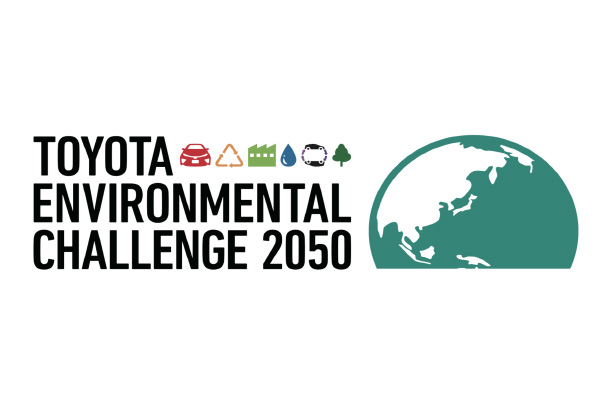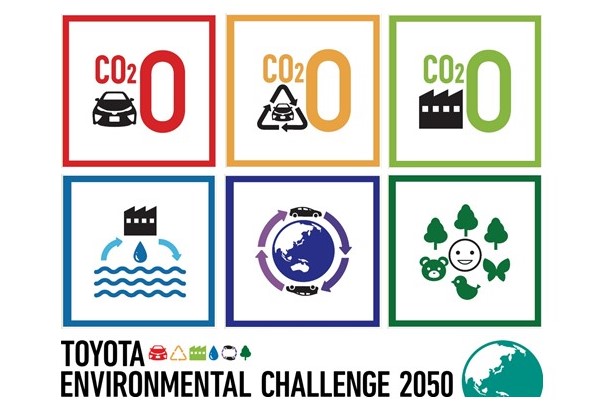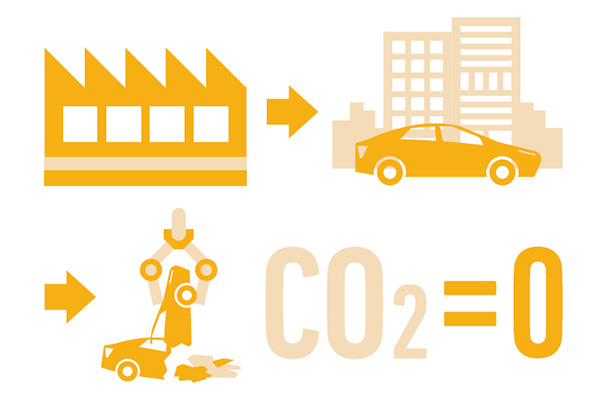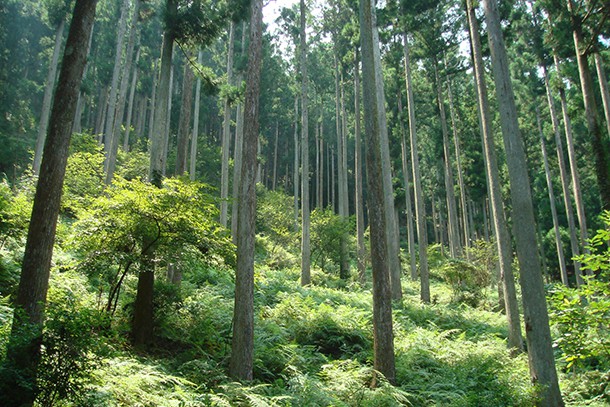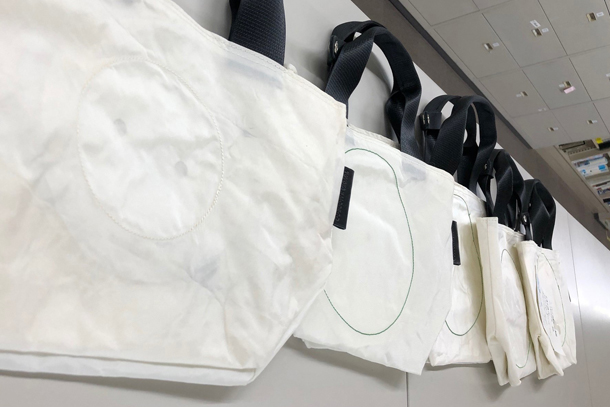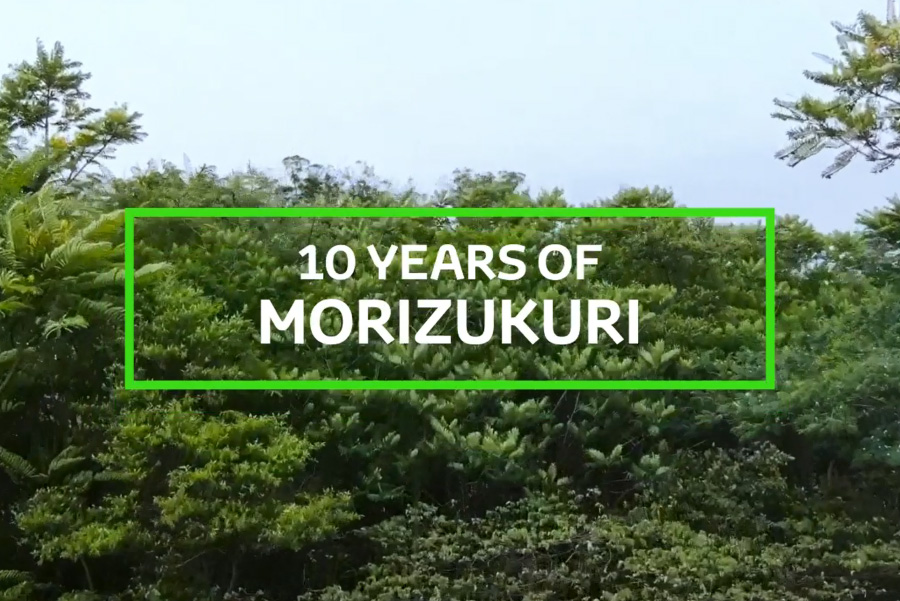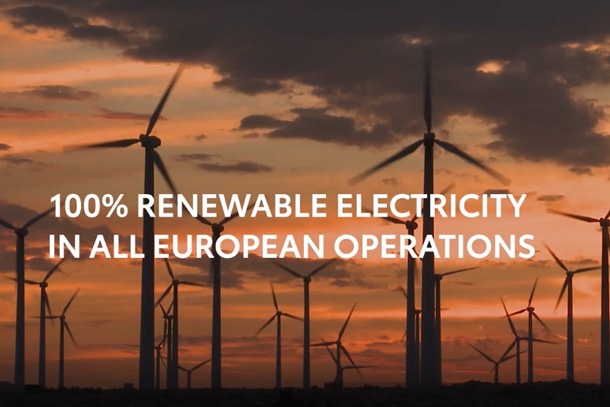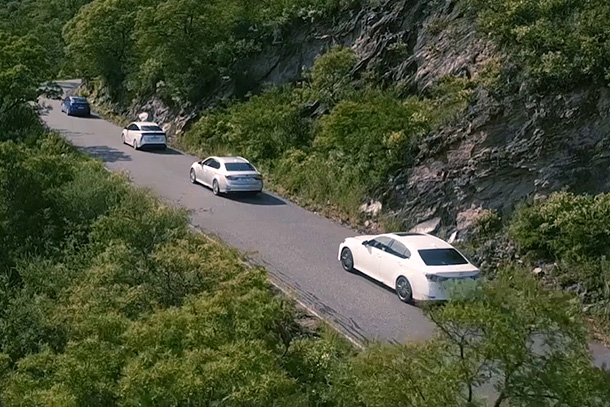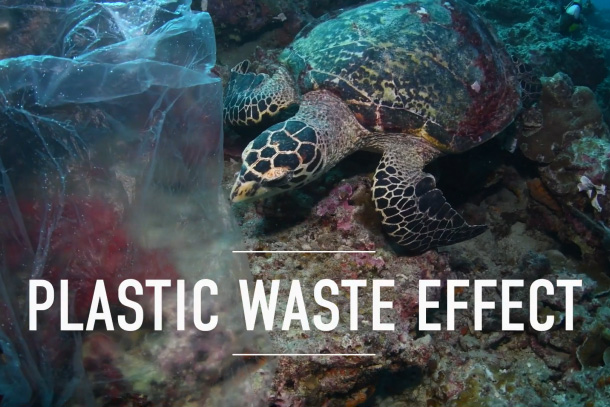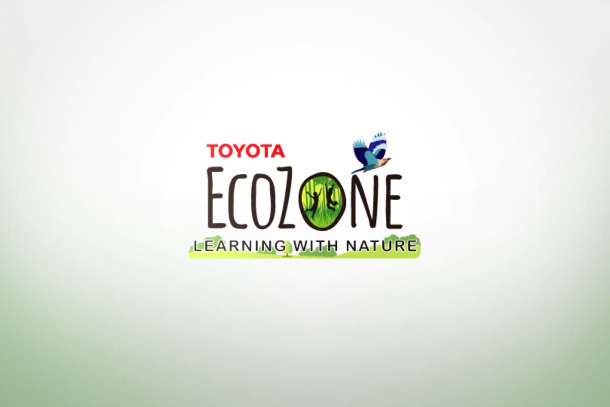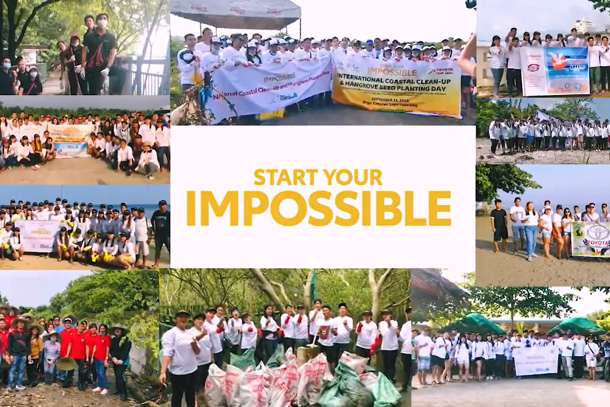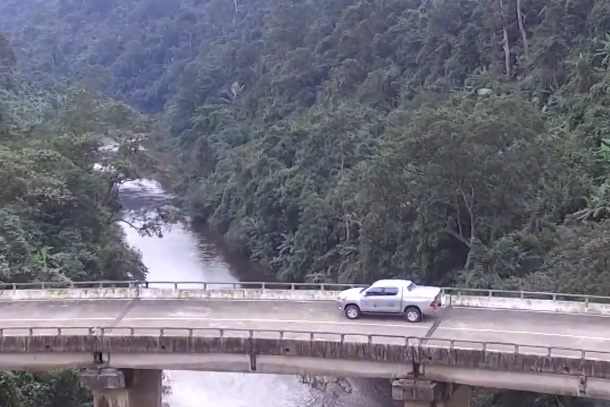Environmental Initiatives
In order to contribute to the sustainable development of society and the world through its business activities while cooperating with global society, Toyota has been conducting continuous environmental initiatives since the 1960s. We aim to build a corporate group that is admired and trusted by society through ensuring that all employees, including those at consolidated subsidiaries, recognize our sustainable policies.
In the area of environment, we established the Toyota Earth Charter in 1992 (revised in 2000). Based on this, we formulated our long-term initiatives for the global environment by 2050 as the Toyota Environmental Challenge 2050, in 2015, when the Paris Agreement was adopted at COP 21*. We are advancing various initiatives centered on this.
| * | The 21st session of the Conference of the Parties to the United Nations Framework Convention on Climate Change |
|---|
Toyota Environmental Challenge 2050
Toyota's Perspective
Toyota's Perspective on Public Policy
Toyota's mission, as defined by the Toyota Philosophy, is "Producing Happiness for All", and the vision is "Creating Mobility for All". We have always been committed to contribute to the overall good, so our approach to business is in line with the vision of the 17 Sustainable Development Goals (SDGs). Our perspective on public policy flows from our desire to do good for society.
The role of government and public policy is critical to helping reduce the effects of climate change and promote expansion of advanced technology vehicles around the world. Toyota seeks to ensure that public policy, societal needs, technology development, and consumer needs are aligned to the greatest extent possible.
As a member of society in the countries and regions in which we operate, we believe it's a privilege and a responsibility to contribute to public policy by sharing our technical and consumer knowledge, our vision and our views. Toyota does this transparently and always in full accordance with the spirit and letter of the law. We have positive relationships with governments and their administrative agencies, regulators, mainstream major political parties, non-profit organizations, local communities, customers, dealers, suppliers, and employees. We show respect to all, consistent with a core company belief and therefore hope to become a company that is respected and welcomed by all.
Contributing to society and public policy means that Toyota places a high priority on participating and influencing activities through industry and other associations. For example, many Toyota executives and employees are currently participating in various associations across the globe and are involved in contributing to their public policy advocacy.
Toyota's Views on Climate Public Policies
We have summarized our views on key climate related policies, our views on public policies, and the industry associations to which we belong. Toyota does so to be more transparent about our activities, to build and increase trust with the public, and to further strengthen cooperation between all stakeholders.
Validation and approval of Toyota's emissions reduction targets by the Science Based Targets initiative (SBTi*1)
Toyota's emissions reduction targets for Scope 1 and 2 and Scope 3 Category 11*2 were validated and approved*3 by SBTi in September 2022 as follows:
| Emissions | Target year | Base year | Reduction rate | Validation / Approval class | |
|---|---|---|---|---|---|
| Scope 1 and 2 | 2035 | 2019 | 68% | 1.5℃ | |
| Scope 3 Category 11 (emission intensity) | |||||
| Passenger light duty vehicles and light commercial vehicles | 2030 | 33.3% | Well Below 2℃ | ||
| Medium and heavy freight trucks | 11.6% | ||||
| *1 |
|
|---|---|
| *2 |
|
| *3 |
|
Highlighted Environmental Activities
Harmony with Nature
TOYOTA's Forest Conservation
Forests are an important basis of the local community and society. Toyota is dealing with the issues and backgrounds of the forest, and is working on creating sustainable forests through various activities.
Click here for further details (Japanese only)
Initiatives at Office
Web Videos on Our Initiatives
Topics
Support provided for the Beijing 2022 Olympic and Paralympic Winter Games (China)
-
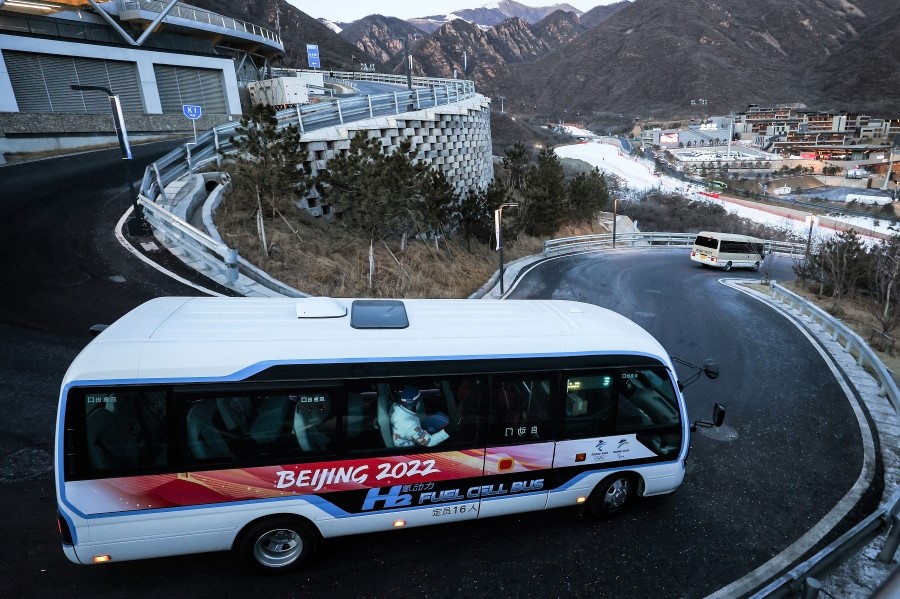
- A small FC electric bus transporting athletes and staff members
The Beijing 2022 Olympic and Paralympic Winter Games were held in China for 17 days from February 4 and 10 days from March 4. During the Games, the Beijing 2022 Organizing Committee focused on reducing CO2 emissions and environmental conservation and carried out various measures in order to achieve their sustainable development goals.
Toyota provided 2,205 electrified vehicles such as HEVs, BEVs, and FCEVs* as official vehicles and supported transportation for athletes and staff members with the aim of achieving a safe, secure, and green Games.
The electrified vehicles, such as the new Mirai―which saw its first large-scale use in China―and a small FC electric bus based on Toyota's Coaster minibus―which were developed for these Games―greatly contributed to reducing CO2 emissions. In addition, accessible mobility vehicles, like the Coaster, Sienna, and Hiace, were used to support transportation for Paralympic athletes.
Toyota will continue to use these Olympic and Paralympic legacy FCEVs and accessible mobility vehicles after the Games. We will also support the development of China's hydrogen fuel cell industry and aim to bring the Mobility for All concept to reality.
Based on the idea that eco-friendly vehicles contribute to the environment only when they come into widespread use, Toyota will continue to respond to the needs of each country and region, including China, and provide a wide range of available options to achieve carbon neutrality. Furthermore, we will keep making efforts, including CO2 emissions reduction at plants and dealers, and contribute toward achieving carbon neutrality.
| * | HEVs: hybrid electric vehicles; BEVs: battery electric vehicles; FCEVs: fuel cell electric vehicles |
|---|
-

- A small FC electric bus transporting athletes and staff members
Achievement of 100 Percent Renewable Electricity Introduction at the TKM Plant (India)
-
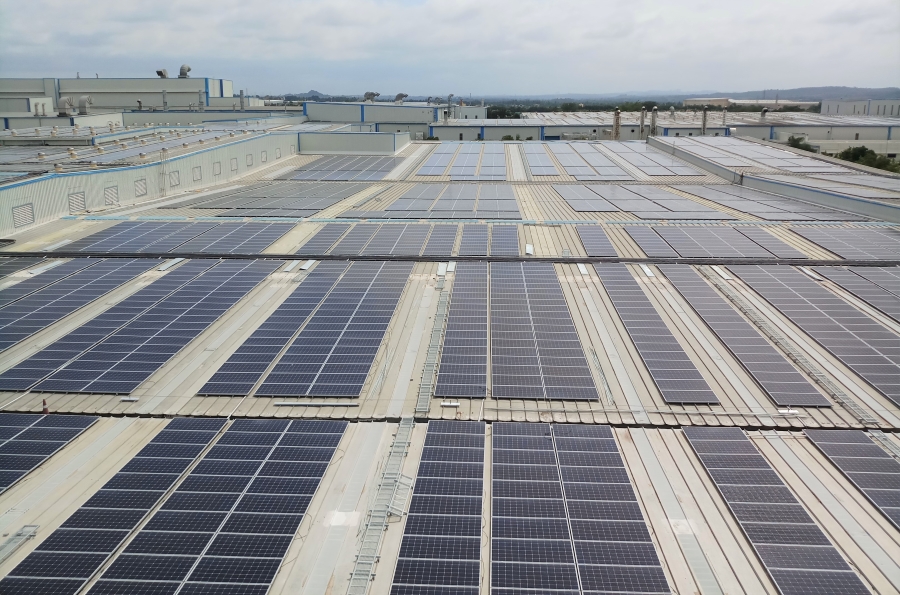
- Rooftop Solar panels installed at the Bidadi Plant
Toyota is undertaking various global initiatives to achieve carbon neutrality at all plants by 2035.
Since FY2015, Toyota Kirloskar Motor (TKM) has been implementing initiatives to increase the use of renewable energy. In June 2021, TKM successfully achieved 100 percent renewable energy conversion of purchased electricity at the Bidadi Plant in Karnataka and eight on-site suppliers.
TKM signed solar power purchase agreements (PPAs) with developers of solar power and the efforts resulted in a cumulative offset of 286,794 tons of CO2 emissions from 2014 to March 2022, through the use of power generated from solar panels installed at the Bidadi premises (8.2 MW) and outside the premises (18 MW).
Taking into consideration the characteristics of each region, Toyota will continue to develop technologies for carbon capture and reuse and other technologies with the aim of achieving carbon neutrality at all global plants by 2035.
-

- Rooftop Solar panels installed at the Bidadi Plant
Seatbelt Reuse as Side Protection Nets for Vehicles (Brazil)
-
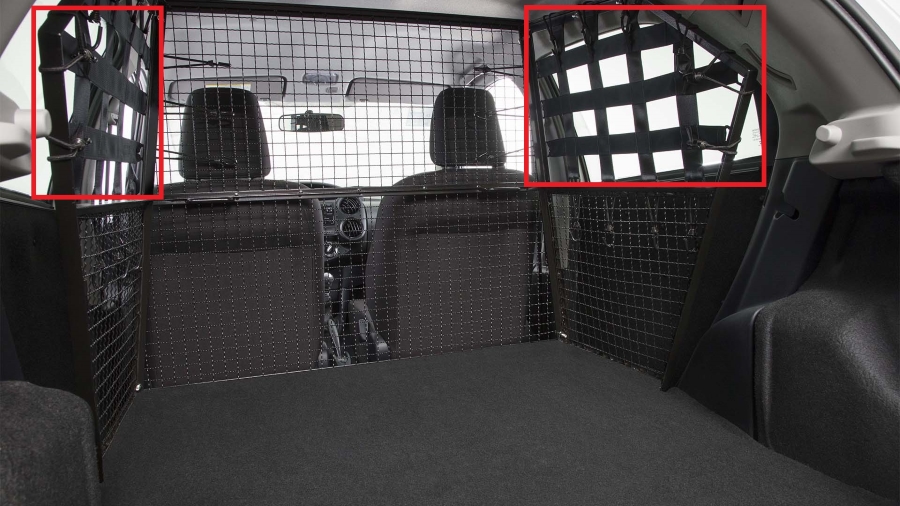
- Inside the Etios Aibo (red frame: side protection net)
The shift from a traditional linear economy based on mass-production, mass-consumption, and mass-disposal to a new circular economy based on zero waste is becoming a global movement.
Toyota do Brazil (TDB) established the Toyota do Brazil Foundation in 2009 and launched the ReTornar Project, an upcycling* initiative in 2011. To date, the project has transformed collected airbags and automotive upholstery fabrics, old work clothes, and other reusable materials into new products such as backpacks and wallets. This initiative not only reduces waste, but also contributes to generating work (sewing) and income for local residents.
In April 2021, as part of the ReTornar Project, TDB announced the Etios Aibo Project in which from January 2022 to August 2023, TDB will collect 1.24 tons of seatbelts and upcycle them into side protection nets for 1,389 Etios Aibo units. The Etios Aibo is a vehicle used for cargo transport that was developed for the Argentina market. This new project received the Grand Prize at the 2021 Eco Award for Toyota's Latin America & Caribbean region.
In order to achieve the ultimate recycling-based society, TDB will continue taking direct measures toward utilizing waste resources.
| * |
|
|---|
-

- Inside the Etios Aibo (red frame: side protection net)
Mangrove Planting for Environmental Conservation Activities (Philippines)
-
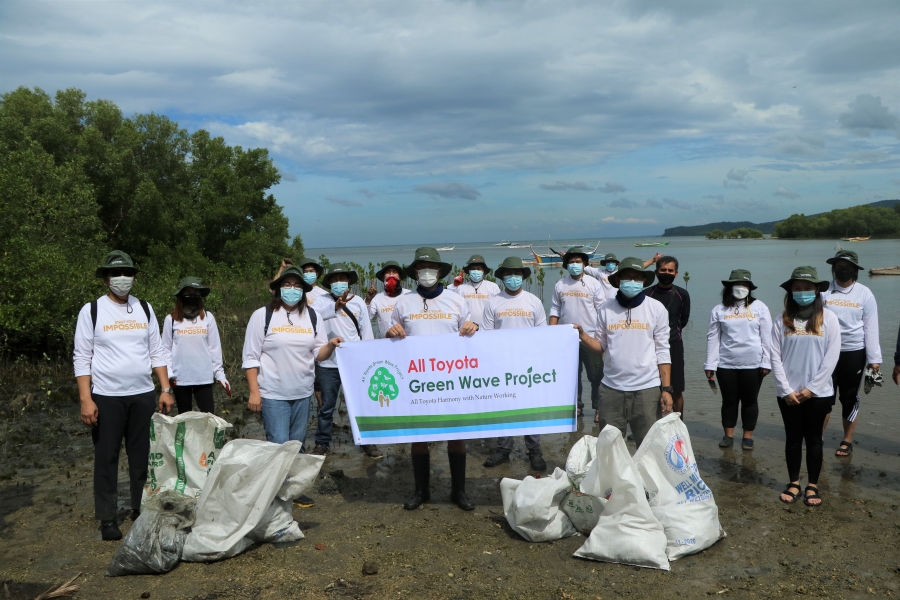
- October 2021, TMP President Okamoto (center) with volunteers
Fragmentation of habitats for various wildlife and loss of biodiversity are increasing across the world due in part to deforestation and marine pollution.
Toyota Motor Philippines (TMP) has planted 36,900 seedlings in both coastal and upland areas through the All-Toyota Green Wave Project implemented by the "Challenge of Establishing a Future Society in Harmony with Nature," which is one of the goals of the Toyota Environmental Challenge 2050.
In 2020, TMP signed a three-year partnership with the Department of Environment and Natural Resources (DENR) to clean up, preserve, and rehabilitate 10 hectares of mangrove plantation areas along the coastline of Lian. Through this partnership, TMP planted 20,000 mangroves and collected 50 kilograms of garbage that drifted ashore in cooperation with local governments in October 2021.
Mangrove planting will help conserve biodiversity, reduce flooding risks from storm surges, and provide employment for local residents. The amount of CO2 absorbed by mangroves is several times more than that of tropical rainforests. TMP believes that increasing mangrove forests is a necessary measure against climate change.
TMP will continue to build good relationships with the local communities and promote activities for bequeathing our beautiful home planet to future generations.
-

- October 2021, TMP President Okamoto (center) with volunteers

